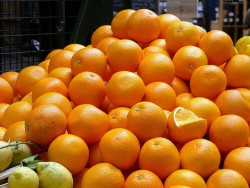 The study, developed by Maria de los Ángeles Martín, José Ángel Siles, Arturo F. Chica y Antonio Martín, members of Áreade Chemical Engineering together with the company Cítricos de Andévalo (Huelva) would open an interesting commercial outlet for the obtaining of biogas.
The study, developed by Maria de los Ángeles Martín, José Ángel Siles, Arturo F. Chica y Antonio Martín, members of Áreade Chemical Engineering together with the company Cítricos de Andévalo (Huelva) would open an interesting commercial outlet for the obtaining of biogas.
Researchers subjected the residues to a pre-treatment extraction of D-limonene, a natural substance that is extracted from the oil of citrus fruit peel and that gives off a characteristic smell of oranges and lemons. The treatment, through which methane is obtained, a process known as anaerobic digestion, consists of a microbiological transformation from the residue in the absence of oxygen. In this way, various gases are generated, among which carbon dioxide and methane are the most abundant (depending on the degraded material). The duration of the anaerobic process will vary depending on various factors, among which some of the most important are temperature, the pH of the biodegradable material and, fundamentally, the characteristics of the residue being treated.
In the laboratory, the output of methane that could be obtained at different temperatures was tested. The group from Cordoba introduced into this process mesophilic micro-organisms (between the optimum growth temperature understood to be between 20°C and 45°C) and thermophiles, which can withstand extreme high temperature conditions (above 45°C) to observe the behaviour of both groups during peel degradation. ‘The results of the study show the benefit of carrying out the process in thermophilic conditions to treat these residues, as the level of methane production, the speed of transformation and the biodegradability were higher than in meophilic conditions,’ the researchers conclude.
According to the FAO, the worldwide production of oranges in 2007 was estimated at sixty-three million tons. A high percentage of this production (seventy percent) is used in the production of juices and jams. However, approximately fifty to sixty percent of the fruit product is converted into residues made up of peel and pulp. ‘Although the peel residue can be reused in a large number of ways, until relatively recently there were no satisfactory methods of eliminating it. Additionally, the by-products obtained in the making of animal feed generate contaminated sewage water that are avoided with this new process,’ says researcher María de los Ángeles Martín.

